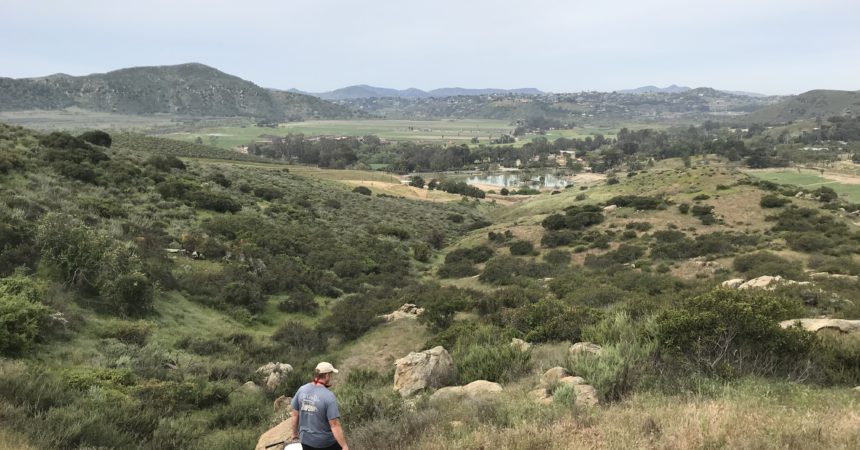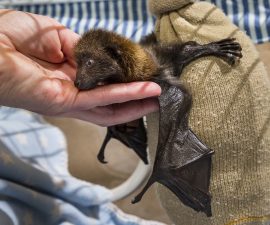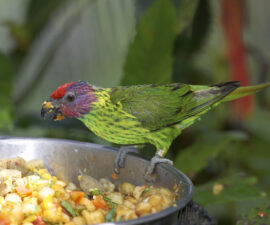Imagine you are hiking on a warm day in spring in the rocky foothills east of Escondido, in San Diego’s North County. Approaching a pile of granite boulders, you hear a sharp click. Then another: click-click. You freeze, as rapid clicks blur into a familiar buzz. For many people, the sound of a rattlesnake rattle provokes fear. For some San Diego Zoo researchers, though, the sound triggers sheer excitement; somewhere nearby is just the animal they were searching for!
Red diamond rattlesnakes (one of four rattlesnakes in our region) are the subject of a new project led by researchers from the San Diego Zoo Global Population Sustainability team and Natural Lands Program. Currently, our work focuses on red diamond rattlesnakes that live in the Safari Park Biodiversity Reserve (SPBDR), a 900-acre coastal sage scrub preserve at the Safari Park.
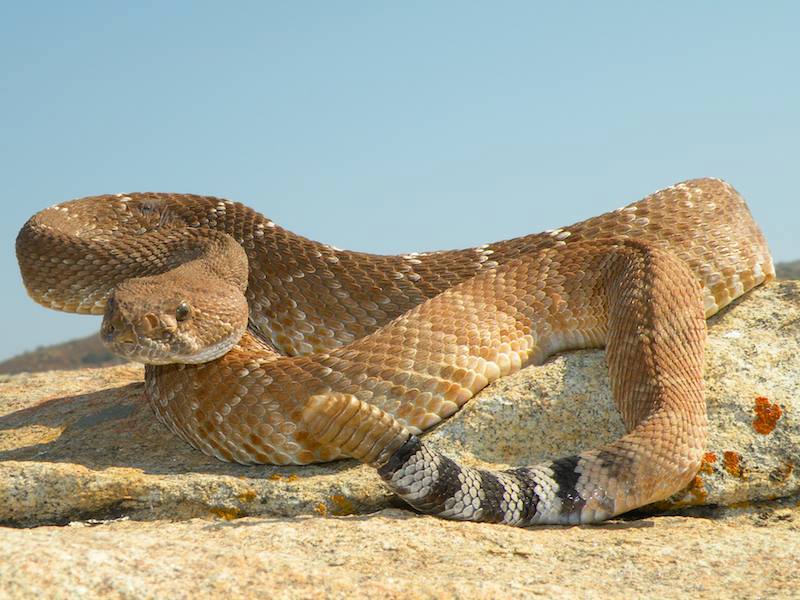
Like many other snakes, red diamonds follow predictable seasonal patterns. During the coldest months, to save energy, red diamond rattlesnakes use overwintering sites. Usually, these are boulder jumbles with plenty of nooks and crannies that offer protection from predators and extreme fluctuations in temperature.
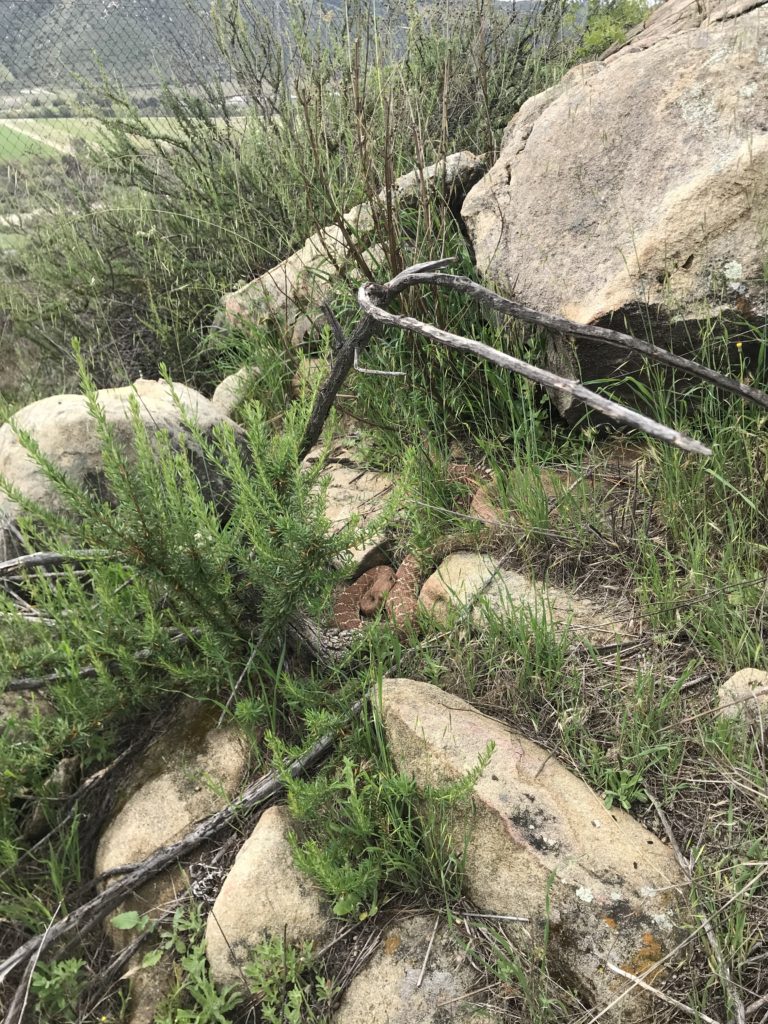
As poikilotherms (animals that do not regulate their own body temperature internally), snakes move bacck and forth between basking in the sun and cooling off in the shade. Endemic to the coasts, foothills, and lower deserts of Southern California and Baja California, Mexico, red diamonds make their home in the western parts of the Colorado desert as well as coastal sage scrub and chaparral of the coasts and foothills, up to about 4,500 feet in elevation.
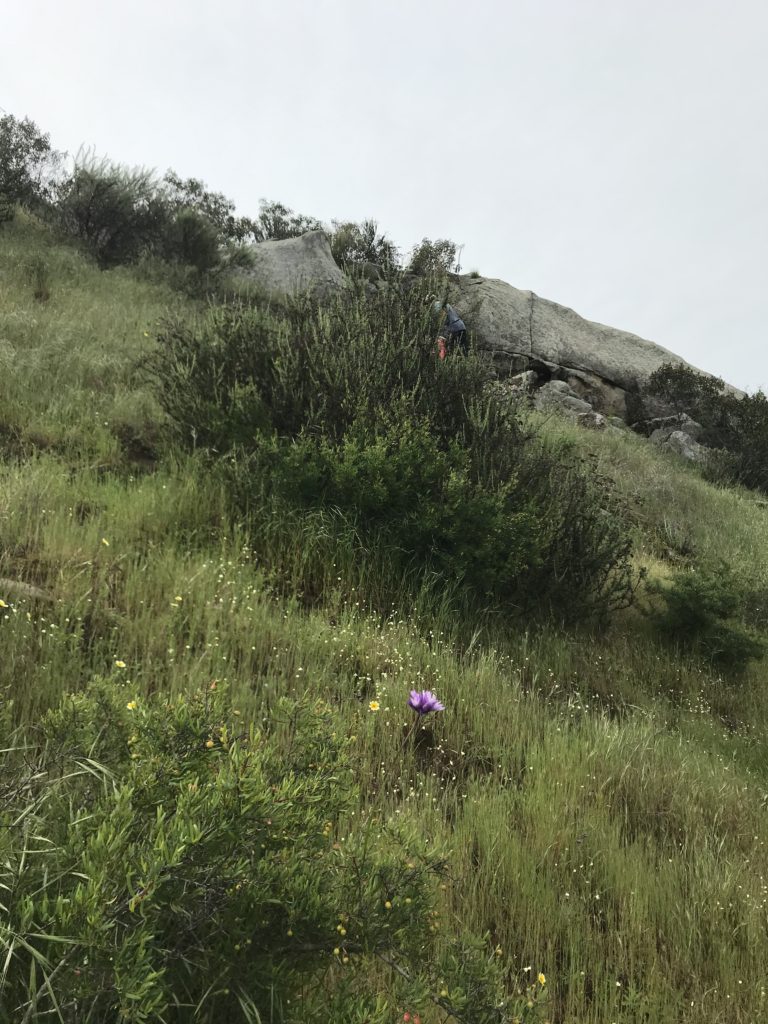
One aim of our study is to understand the population genetics and den use behavior of this species. Den sites are where many of the rare but important moments of social interaction in a rattlesnake’s life take place. Researchers have documented instances of breeding and male-male combat near dens, but many questions remain. For example, if snakes return to the dens every year and they breed near them, how do they avoid inbreeding? Do young snakes disperse to new territories? Or are there behavioral traits that help them maintain genetic diversity?
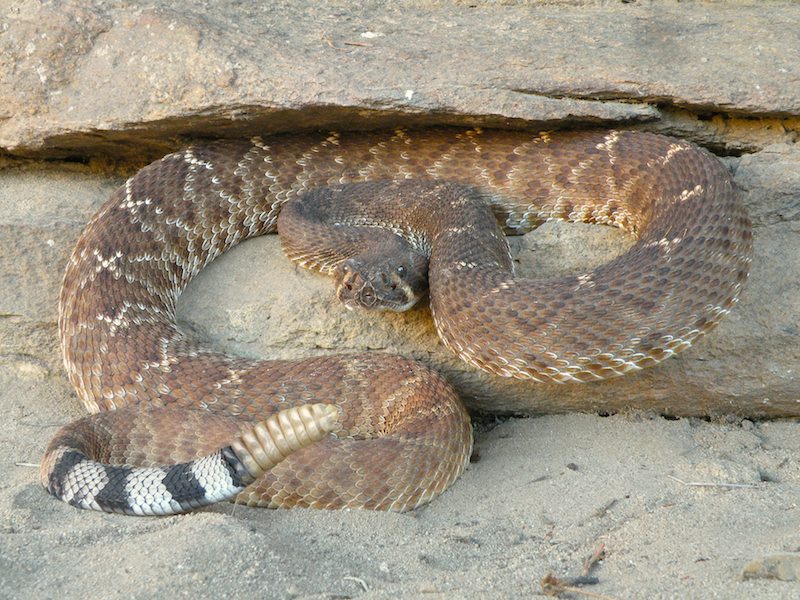
Rattlesnakes are an important part of our coastal Southern California ecosystems. As predators, they regulate rodent populations. As prey they are a valuable food source for top predators like bobcats and red-tailed hawks.
To answer these questions, we are taking blood samples from snakes we find in the SPBDR, placing a unique identifying microchip (called a Passive Integrated Transponder, or PIT tags), and marking their rattles with non-toxic paint for visual identification. The 10-minute process takes place in the field and we release the snakes exactly where they were found. Analysis of DNA extracted from the blood samples will tell us the relatedness of all the individuals we handled (who are mothers and fathers, sisters and brothers, and even distant cousins?).
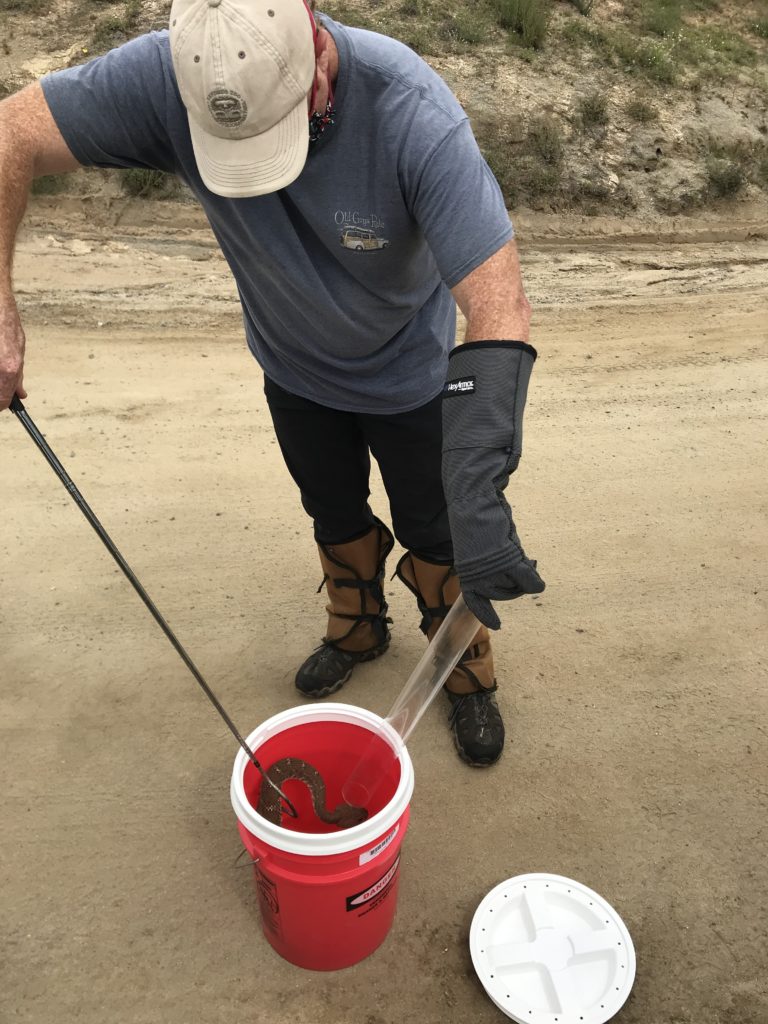
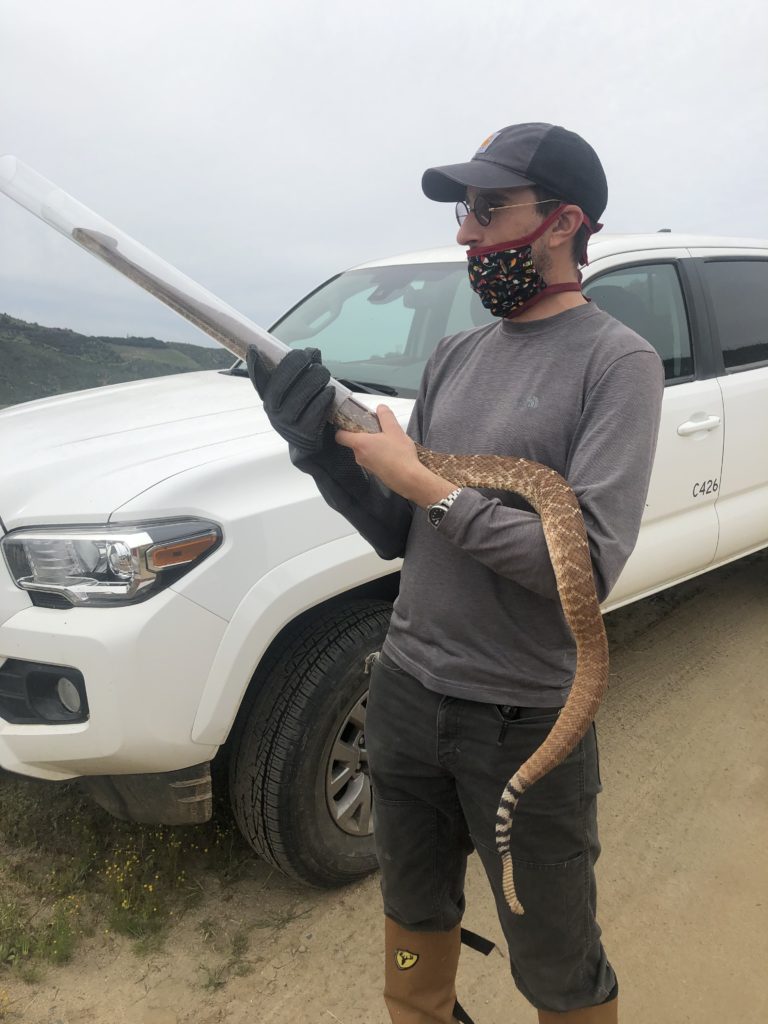
We can later check up on individuals we spot in the field again without even touching them. As long as the PIT tag reader wand is within 1.5 feet of the microchip, we can pick up the information logged in the transponder. Over time, with enough encounters, we can start to piece together a picture of who traveled where, and when.
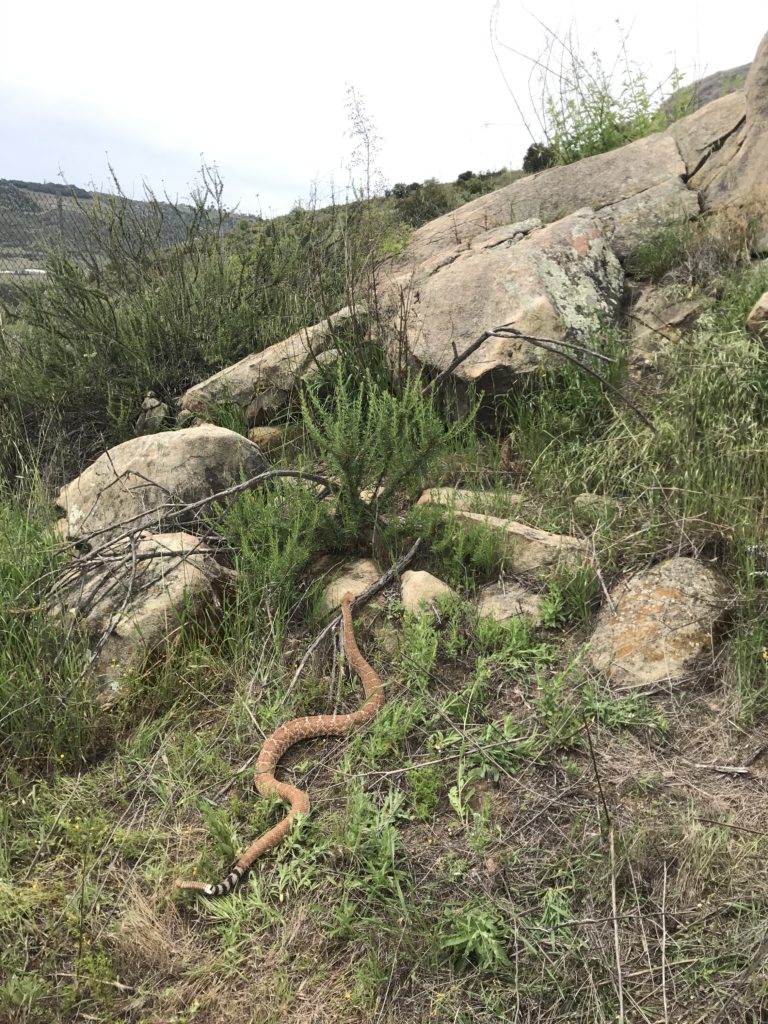
Later this year, we plan to do a deeper dive into patterns of den use by red diamond rattlesnakes. Field researchers often use remote-triggered, fixed camera systems to study animal movements. The most common type uses an infrared beam to detect the heat signature of an animal, which then triggers the camera to record a short video of burst of photos. Being poikilotherms, however, rattlesnake body temperatures are often too close to the surrounding air and ground temperature values to trigger infrared sensors.
We are collaborating with our Conservation Technology Lab (CTL) to develop brand new tools and techniques to detect rattlesnakes coming and going from dens. CTL researchers are developing an entirely new camera system to detect rattlesnakes as they pass. Another detection tool we’ll set up later this year is an array of PIT tag readers that will also monitor the entrances of important overwintering sites, passively logging snakes coming and going from the area. Besides saving time and funding, using automated, remote data logging systems mean that no human needs to be nearby to operate them—guaranteeing the most natural behavior possible from the snakes.
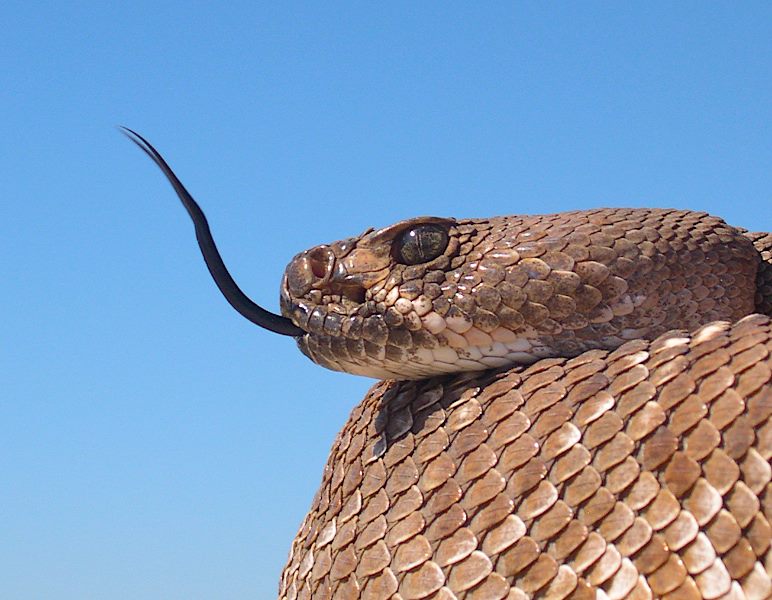
Despite their outsized reputation, rattlesnakes are important to habitat health. Yet, there’s still much about their behavior and ecological role. We hope to fill in some of the gaps with this project, allowing us to make better decisions about their conservation. We also hope that telling their story will help people appreciate them as a valuable component of our remaining Southern California wildlands.
Charlie de la Rosa is the Natural Lands Manager for the San Diego Zoo Institute for Conservation Research.

